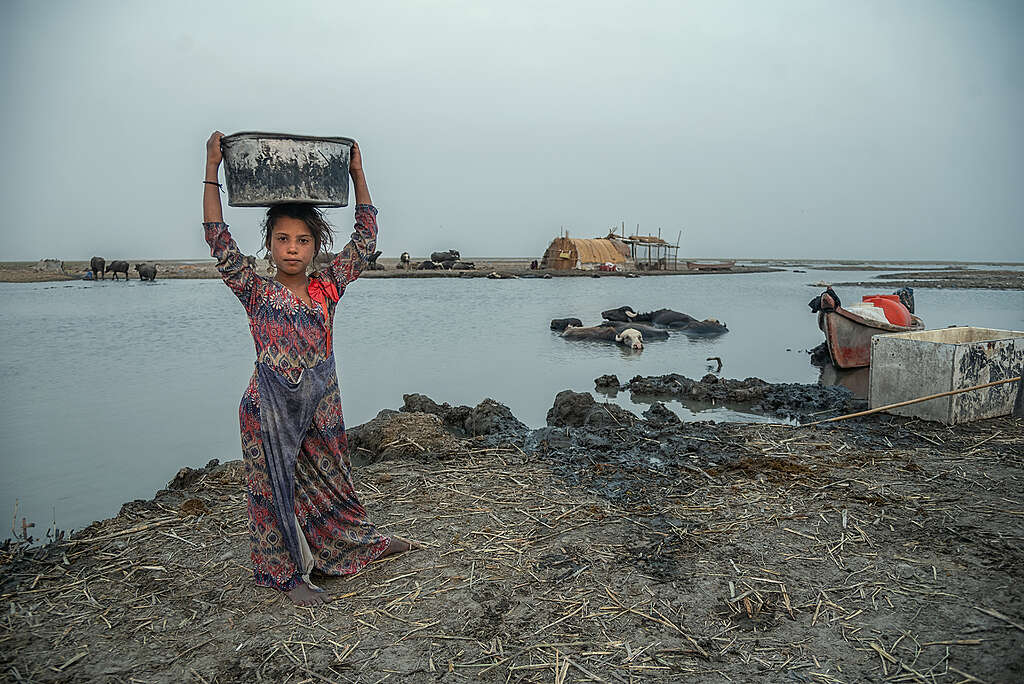Every month we ask our supporters across the MENA region to tell us how they are experiencing the impacts of climate change. While it is important to note that not all of these instances can be solely attributed to climate change, the diverse perspectives, experiences, and realities shared by individuals in our region provide valuable insights into the various ways they perceive climate change and its impacts on their lives and surroundings.
We plan to monthly publish this blog – let us know here if you’d like to share your own experience.
Climate Change Impacts Cause the Worst Droughts in Jordan
In principle, when compared to several other Arab countries that are facing the harsh impacts of climate change, it is evident that Jordan is not an exception. Our examination of numerous testimonies from Jordanians who wrote to us reveals that a significant portion of their observations were related to the altered nature of the land, primarily due to drought, which has undergone noticeable changes within a mere span of 20 years.
Saleh Nazhan al-Khraisha says: “Twenty years ago, the lands in Jordan were cultivated and yielded wheat and barley. Today they have become barren and unproductive. The nature of the soil changed after the region was hit by a drought. As a result, livestock breeders who relied on grazing areas, have now lost their pastures and the lacking water sources are no longer sufficient to meet the needs of Jordanian citizens. Therefore, people are no longer raising livestock, and many have given up cultivating the land. The kingdom has become dependent on importing grain, whose prices have sharply increased.”
On the other hand, Juman al-Hadid believes that the impacts of climate change in Jordan can be felt through “the prolonged summer season, accompanied by an unprecedented rise in temperatures, and the late winter season, which is witnessing a remarkable decrease in precipitations.”
Olive Trees and Climate Impacts in Algeria
Summer of 2022 had serious repercussions on Algeria. The forest fires that devastated the northeast of the country near the borders with Tunisia killed at least 38 people, and destroyed about 1,800 hectares of forests and 800 hectares of forest wealth in the provinces of El Taref, Setif, Souk Ahras, Jijel, Skikda, and Tipaza.
In the same context, Algerian farmer Mourad Siddiqui, lists other serious impacts of the extreme heatwaves that ravaged the country this year, stating that: “The impacts of climate change can be certainly noticed. Successive heatwaves have affected a number of fruit trees, such as fig trees, whose fruits are dropping prematurely. Even olive trees’ leaves have significantly shrunk and become very weak, which in turn affected olive production.” Mourad fears that the drought will affect the cactus fruit due to the lack of precipitations, noting that the prickly pear (cactus) can grow in dry environments and does not require much water. However, he adds: “the lack of rain during the past winter season forced me to irrigate many winter crops in December and February.”
On the other hand, an Algerian citizen – who preferred to remain anonymous – shares his experience in welcoming the fall: “Today is September 7th in the Aures, north of the Algerian desert. Temperatures are not extreme, but the daily weather fluctuations are accompanied by either cold air or sandstorms.” Similarly, Farouk Shalali also briefly suggests that the strong dust-filled winds “coincided in the past with the spring season, but are now more frequent in the beginning of autumn.”
Common Climatic Fluctuations Between Yemen and Iraq
The war in Yemen is no longer the only challenge burdening the people of this country, which is witnessing the worst humanitarian crisis in the world, according to the United Nations. Climate change poses a double challenge, particularly for the agricultural sector which serves as the primary food source in Yemen.
This year, after about 6 continuous months of drought, Samir Ali says that all areas of the country witnessed “floods and torrents following heavy rain,” which had devastating impacts on lives and livelihoods. According to Samir’s testimony, the farmers noted a “significant decrease in agricultural production due to climatic fluctuations and rainfall.”
From Yemen to northern Iraq near the Turkish borders, Mahvan Muhammed Hussein takes us back to the 1980s-1990s to describe the succession of seasons: “Back then, rain began in September, and starting from November and December, snow would block all roads in the town of Bamarni where I lived. Today, snowfall has become a rare occurrence and we often wish it would rain, even if just a little.”
Meanwhile, Alaa Majid Nour talks about the heatwaves that southern Iraq witnessed this summer until early September, noting that “the temperature rose to 50° Celsius,” in addition to the large disappearance of “green spaces across the country, especially in the last decade.”

